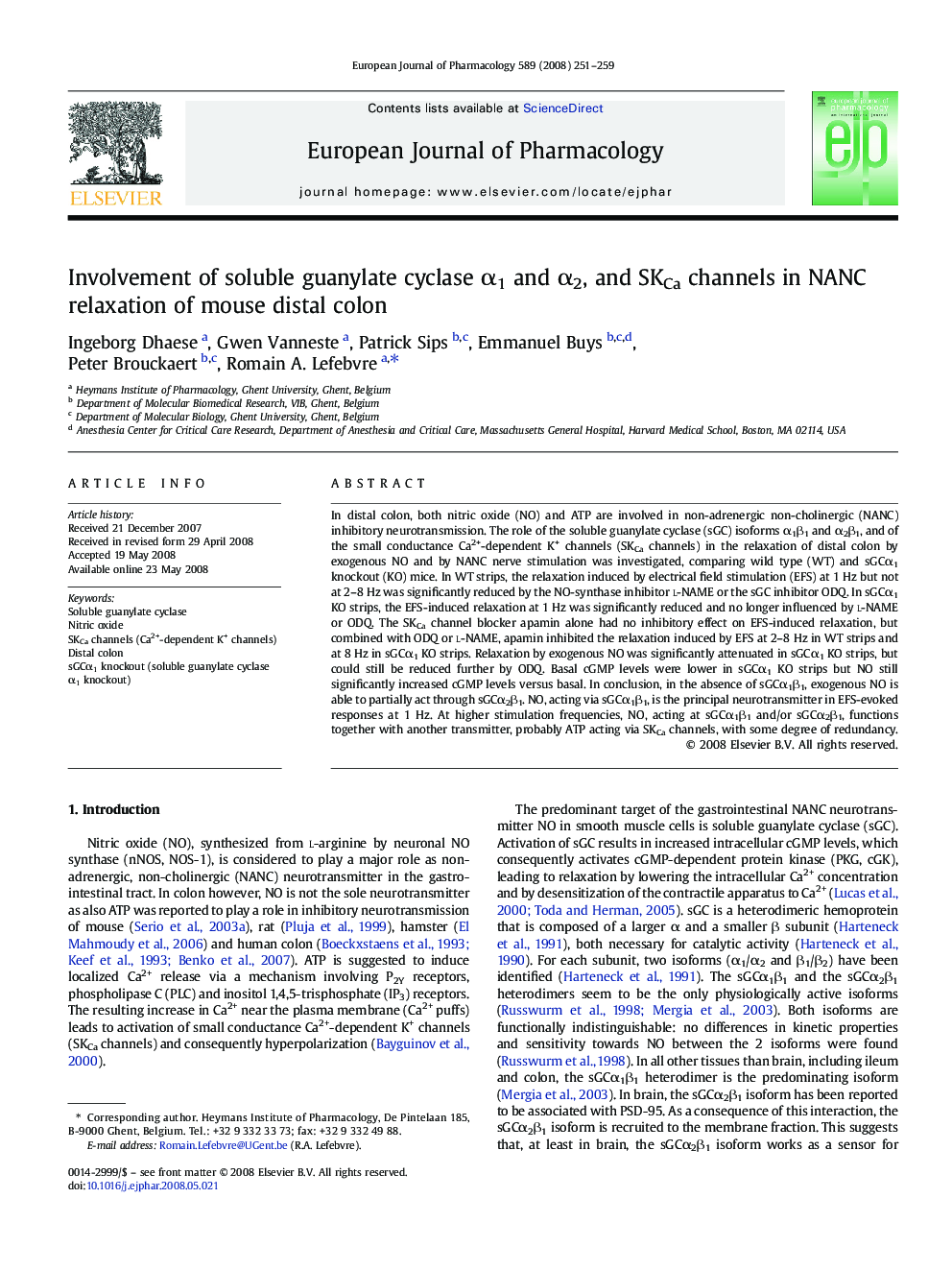| Article ID | Journal | Published Year | Pages | File Type |
|---|---|---|---|---|
| 2535124 | European Journal of Pharmacology | 2008 | 9 Pages |
In distal colon, both nitric oxide (NO) and ATP are involved in non-adrenergic non-cholinergic (NANC) inhibitory neurotransmission. The role of the soluble guanylate cyclase (sGC) isoforms α1β1 and α2β1, and of the small conductance Ca2+-dependent K+ channels (SKCa channels) in the relaxation of distal colon by exogenous NO and by NANC nerve stimulation was investigated, comparing wild type (WT) and sGCα1 knockout (KO) mice. In WT strips, the relaxation induced by electrical field stimulation (EFS) at 1 Hz but not at 2–8 Hz was significantly reduced by the NO-synthase inhibitor l-NAME or the sGC inhibitor ODQ. In sGCα1 KO strips, the EFS-induced relaxation at 1 Hz was significantly reduced and no longer influenced by l-NAME or ODQ. The SKCa channel blocker apamin alone had no inhibitory effect on EFS-induced relaxation, but combined with ODQ or l-NAME, apamin inhibited the relaxation induced by EFS at 2–8 Hz in WT strips and at 8 Hz in sGCα1 KO strips. Relaxation by exogenous NO was significantly attenuated in sGCα1 KO strips, but could still be reduced further by ODQ. Basal cGMP levels were lower in sGCα1 KO strips but NO still significantly increased cGMP levels versus basal. In conclusion, in the absence of sGCα1β1, exogenous NO is able to partially act through sGCα2β1. NO, acting via sGCα1β1, is the principal neurotransmitter in EFS-evoked responses at 1 Hz. At higher stimulation frequencies, NO, acting at sGCα1β1 and/or sGCα2β1, functions together with another transmitter, probably ATP acting via SKCa channels, with some degree of redundancy.
